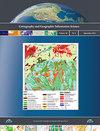地理不可分辨掩蔽:增强空间点映射的隐私保护
IF 2.4
3区 地球科学
Q1 GEOGRAPHY
Cartography and Geographic Information Science
Pub Date : 2023-10-31
DOI:10.1080/15230406.2023.2267967
引用次数: 0
摘要
摘要空间点映射是探索性点模式分析的一种有效方法,但由于空间点映射可能暴露个体的身份,因此存在较大的隐私风险。测绘方法已经开发出来,通过在测绘之前置换空间点来降低风险。然而,这些方法中的许多都依赖于一种称为空间k-匿名的弱隐私概念,这不足以承受越来越多的空间数据(例如土地使用),攻击者可以将其用作推断个人实际位置的附带信息。我们提出了一种称为地理不可分辨掩蔽的方法来解决这个问题,该方法依赖于一种称为地理不可分辨的强隐私概念。这一概念确保了无论任何附带信息如何都能保持一致的隐私保护水平。该方法包括两个步骤。第一步是为每个空间点创建一个掩蔽区域,以包含一组候选位置,点可以被重新定位到这些位置。在第二步,我们建立了一个优化模型,以确保被遮挡的位置满足地理不可分辨性,同时最小化位移距离。在一个合成数据集上的计算实验表明,我们提出的方法在保留空间点模式的同时提供了强大的隐私保护。关键词:差异隐私、地理不可区分性、地理测绘、地理隐私、空间匿名化披露声明作者未报告潜在的利益冲突。数据可用性声明支持本研究结果的数据和代码可在Figshare上获得https://doi.org/10.6084/m9.figshare.23632443.Supplementary material本文的补充数据可在https://doi.org/10.1080/15230406.2023.2267967.Notes1上在线获取。https://www.gurobi.com/.2。https://www.ibm.com/products/ilog-cplex-optimization-studio/cplex-optimizer.3。https://www.coin-or.org/。本文章由计算机程序翻译,如有差异,请以英文原文为准。
Geo-indistinguishable masking: enhancing privacy protection in spatial point mapping
ABSTRACTSpatial point mapping is a useful practice in exploratory point pattern analysis, but it poses significant privacy risks as the identity of individuals may be revealed from the maps. Geomasking methods have been developed to mitigate the risks by displacing spatial points before mapping. However, many of these methods rely on a weak privacy notion called spatial k-anonymity, which is insufficient to withstand the growing amount of spatial data (e.g. land use) that adversaries can use as side information to infer the actual locations of individuals. We proposes a method called geo-indistinguishable masking to address this issue by relying on a strong privacy notion called geo-indistinguishability. This notion ensures consistent levels of privacy protection regardless of any side information. The method consists of two steps. The first step involves creating a masking area for each spatial point to include a set of candidate locations to which the point can be relocated. In the second step, we formulate an optimization model to ensure the masked locations satisfy geo-indistinguishability while minimizing the distance displaced. Computational experiments on a synthetic dataset demonstrate that our proposed method is both efficient and effective in providing strong privacy protection while preserving the spatial point patterns.KEYWORDS: Differential privacygeo-indistinguishabilitygeomaskinggeoprivacyspatial anonymization Disclosure statementNo potential conflict of interest was reported by the author(s).Data availability statementThe data and code that support the findings of this study are available on Figshare at https://doi.org/10.6084/m9.figshare.23632443.Supplementary materialSupplemental data for this article can be accessed online at https://doi.org/10.1080/15230406.2023.2267967.Notes1. https://www.gurobi.com/.2. https://www.ibm.com/products/ilog-cplex-optimization-studio/cplex-optimizer.3. https://www.coin-or.org/.
求助全文
通过发布文献求助,成功后即可免费获取论文全文。
去求助
来源期刊
CiteScore
5.20
自引率
20.00%
发文量
23
期刊介绍:
Cartography and Geographic Information Science (CaGIS) is the official publication of the Cartography and Geographic Information Society (CaGIS), a member organization of the American Congress on Surveying and Mapping (ACSM). The Cartography and Geographic Information Society supports research, education, and practices that improve the understanding, creation, analysis, and use of maps and geographic information. The society serves as a forum for the exchange of original concepts, techniques, approaches, and experiences by those who design, implement, and use geospatial technologies through the publication of authoritative articles and international papers.

 求助内容:
求助内容: 应助结果提醒方式:
应助结果提醒方式:


